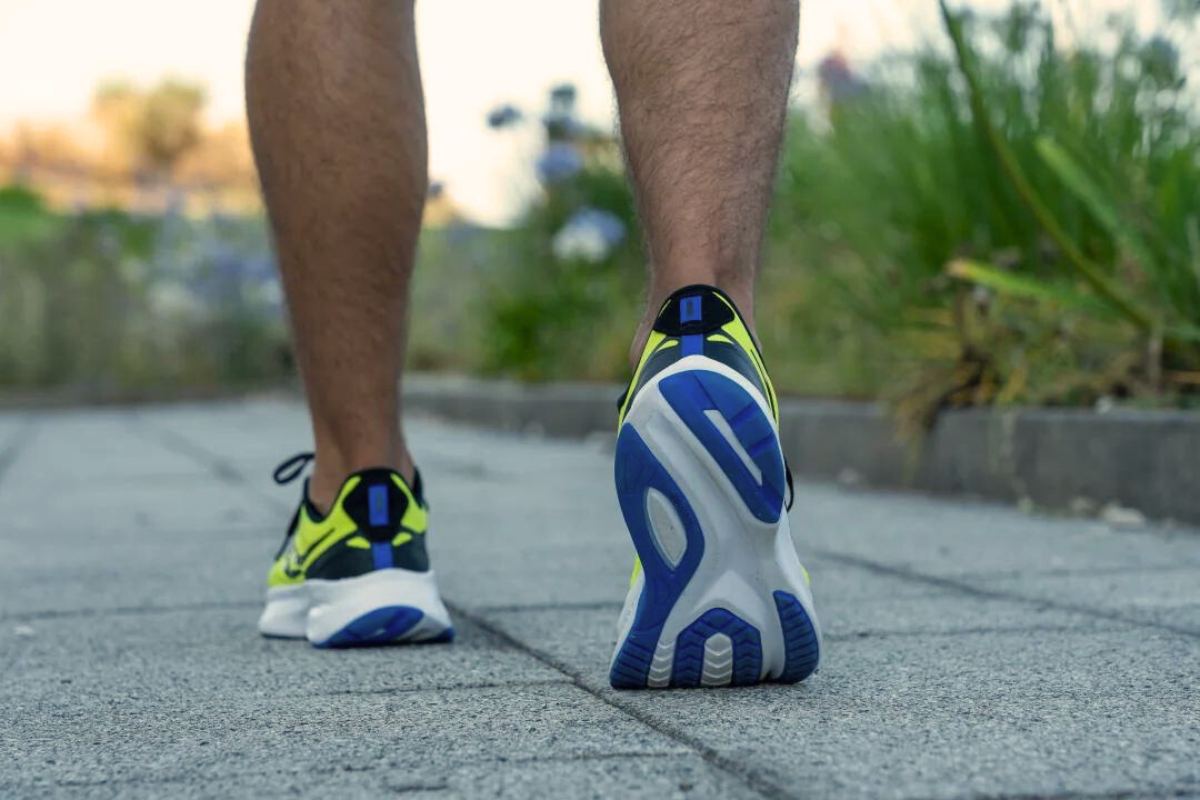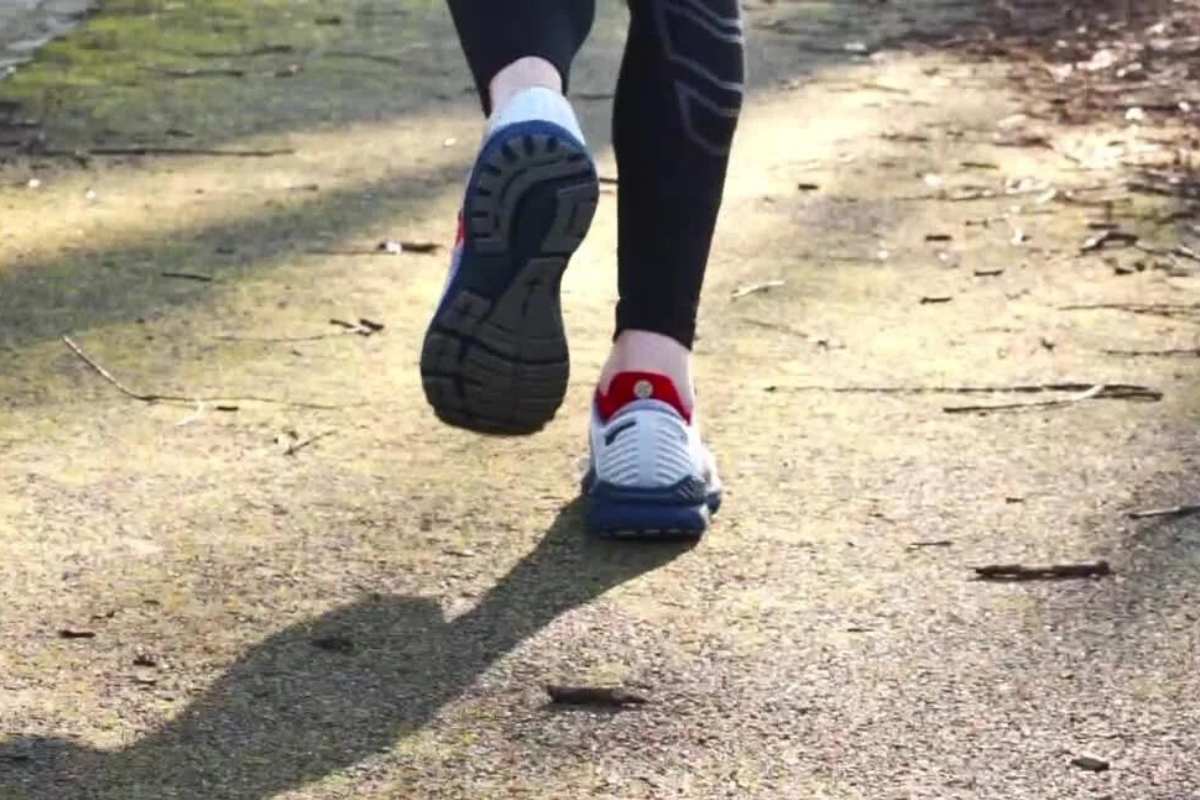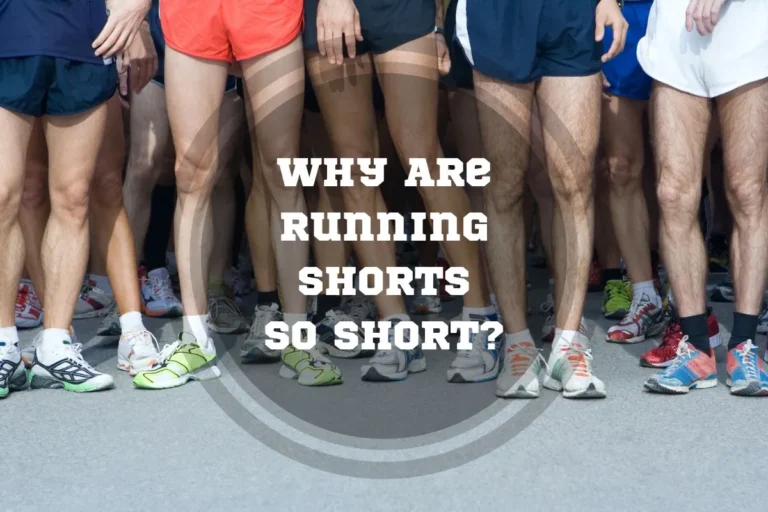Saucony vs. Brooks: Exploring the Difference
Have you ever found yourself caught between two popular running shoe brands, such as Saucony vs. Brooks? When it comes to making the best decisions for your fitness, choosing the right shoe can be pivotal.
Many runners are confused by the limited amount of information about each brand, and not sure which one is better. This article will compare Saucony vs Brooks running shoes so that you can make an informed decision on what works best for you! Read on as we explore the difference between these two brands.
What Is the Difference Between Brooks vs Saucony?
When comparing Saucony vs. Brooks, runners should first consider their needs. When debating between Saucony or Brooks, keep in mind that Saucony has a snugger fit compared to the larger toe boxes offered by Brooks. Both brands provide cushioning technology and stability features catered towards any activity level.

What Are Saucony Running Shoes?
Saucony is one of the original American sports footwear companies, with a history going back to 1898. The brand has developed a stellar reputation and is considered one of the top brands in the performance footwear industry.
Saucony shoes are known for their durability, comfort, and performance, all of which make them popular among runners. Their combination of premium materials makes these athletic shoes light but still supportive enough for any terrain or activity level. They also offer superior cushioning capabilities and provide breathability so your feet stay cool on runs.
Saucony also takes into account various problems with runners’ feet, as evidenced by its Grid technology outsole system, which provides cushioned support that evenly distributes impact forces with each step.
Not only do these shoes offer exceptional cushioning, but their diverse range also ensures that there is something suitable for any type of terrain. The Saucony line also includes options specifically designed for runners who tend to overpronate or have high arches. With widths ranging from N (narrowest) to 4E (extra-wide), Saucony takes everyone into consideration when creating their line of footwear.

What Are Brooks Running Shoes?
Brooks has been one of the most highly respected running shoe brands in the world since it was founded in 1914. Throughout the company’s history, it has made waves in the industry by producing revolutionary technology and designs that deliver top-notch performance and support for runners’ feet.
In 2014, the brand released the groundbreaking DNA cushioning system, which provides optimum responsiveness. Another benefit is the GuideRails holistic support system, which helps reduce wear and muscle strain during runs.
These technologically advanced features are key reasons why Brooks Running shoes remain a popular option among both professional athletes and everyday runners.
Brooks has designed innovative shoes for all types of terrain. With Podular Technology that is capable of adapting to both rocky trails and asphalt, long-distance runners can rely on the durability of the soles without sacrificing comfort or cushioning.
Brooks also takes into consideration various foot problems experienced by runners. Its shoes offer an extra inch of width in the toe box, which makes them ideal for people who suffer from bunions or wide feet.
The size grid and width range are what makes the Brooks line stand out from other brands, as they offer sizes that can accommodate different foot shapes and preferences. The extended sizes come in a variety of widths, like narrow, medium-wide, and extra wide, which helps to ensure the perfect fit for runners who expect more support and cushioning.

Saucony vs Brooks: What Are the Main Differences?
When comparing Saucony and Brooks shoes, the main differences are size and fit, cushioning and stability, durability, and additional features. Let’s take a closer look at those features:
1. Size and Fit
When selecting running shoes, fit and sizing tend to be top considerations. So what about Saucony vs Brooks sizing? Saucony shoes usually have a snugger fit than Brooks models, which are designed for more comfort with a larger toe box.

Pro Tip:
Both brands have their own individual size grids and range of width options, so it’s important for runners to take into account various problems, such as heel slippage or snugness of the midfoot, before making a decision.

Pro Tip:
Both brands have their own individual size grids and range of width options, so it’s important for runners to take into account various problems, such as heel slippage or snugness of the midfoot, before making a decision.
Those who prefer more room to move their toes should look into Brooks models, because they often offer more room than Saucony products. However, if you want your feet firmly secured in place, then consider buying Saucony, which is known for its snug but comfortable fit.
2. Cushioning and Stability
Saucony and Brooks are both well-known for their cushioning and stability features. Saucony offers stability-oriented shoes that provide support, overpronation correction, and balanced cushioning. The moderate flexibility allows runners to comfortably feel the road while still being protected from impact.
Similarly, Brooks offers runners support, stability, and overpronation correction, while still allowing feet to move naturally due to a flexible upper design. And just like Saucony shoes, Brooks offers a high level of cushioning, with plush layers of foam below the foot for superb shock absorption, without sacrificing any responsiveness.
Subscribe to Our Running Newsletter!
Get free running tips from renowned professional athletes and discounts from top-notch brands.
3. Durability
Saucony has a well-earned reputation for making high-quality and durable running shoes. Their models are regularly praised for their strength, toughness, and resilience.
Brooks running shoes also boast high durability, while also emphasizing comfort as one of their main features.
4. Additional Features
Saucony and Brooks running shoes both offer unique features that make them stand out from the competition. For instance, Saucony offers a plush and protective feel with its Excursion models. These shoes have a soft collar for added comfort, midsole cushioning to support feet over long distances, and an adjustable lacing system ensuring you get a perfect fit every time.
Meanwhile, Brooks provides a great balance between cushioning and responsiveness in their models. The shoes have ample overlays on the upper mesh layers for a supportive structure, while still allowing breathability. In addition, they offer shock-absorbent features with their BioMogo DNA foam sole design, making them suitable for runs of any distance on any type of terrain.
What to Look for When Buying Running Shoes: Saucony vs Brooks
When selecting between Saucony and Brooks shoes, it’s important to take into consideration the design features, upper material, midsole construction, and outsole durability in order to identify which is best suited for you.

1. Upper
When choosing between Saucony and Brooks running shoes, it is important to consider the fit of the upper. Saucony shoes tend to be a bit narrower overall than Brooks and offer a snugger fit for runners with standard width feet.
In comparison, running shoes from Brooks typically provide more room in the toe box thanks to their rounded shape and ample cushioning. This makes them an ideal option for people who need a bit more space around their toes when running.
2. Midsole
The midsole construction is what gives the shoe its cushioning, support, and energy return, which can impact comfort during a run.
Saucony incorporates their PWRRUN material in the midsole for lightweight cushioning and springy response, leading to more efficient runs. This midsole-material uses compression-molded EVA foam with TPU pellets designed to capture environmental heat, creating an efficient energy transfer from heel strike to toe off.
On the other hand, Brooks utilizes polyurethane insoles as opposed to foam midsoles, which deliver higher levels of stability, without compromising on cushioning or energy return thanks to the DNA Loft tech.
3. Outsole
The sole of a running shoe has a major effect on its traction, durability, and performance. For instance, some outsoles have better grip on wet surfaces or more wear-resistance for those who log many miles.

Pro Tip:
When deciding between Saucony and Brooks, it’s important to research each model’s features in order to make an informed choice.

Pro Tip:
When deciding between Saucony and Brooks, it’s important to research each model’s features in order to make an informed choice.
For example, both the Saucony Guide 16 and Brooks Ghost 15 offer high levels of cushioning, but when comparing their outsoles, they cater to different terrains. The Ghost15 performs better on roads, whereas the Guide16 offers superior grip while trail running due to its deeper channel pattern and heavier rubber compound for increased protection.
Saucony vs Brooks: Summary
When choosing between Saucony and Brooks running shoes, the decision largely depends on personal preference and budget. Comparing brands can help runners make an informed purchase that meets their individual needs.
Pros and Cons of Saucony Running Shoes
While Saucony tends to be slightly more expensive than some other brands, dedicated runners can rely on their good value and quality.
The main benefit is that most Saucony models feature rubbery foam cushioning with gears in the lateral and medial areas of the midsole that disperse pressure during runs.
Furthermore, Saucony generally has lower stack heights compared to its competitors. That’s why runners may feel closer to the ground, with better feedback from road surfaces. This makes Saucony shoes suitable for speed work or tempo runs, without sacrificing stability.
Pros and Cons of Brooks Running Shoes
Brooks running shoes are known for their durability, cushioning, and fit. The brand’s DNA midsole is designed to provide responsive shock absorption, which has been a major selling point for many runners.
The shoe’s Adaptive Fit technology cradles the foot in its engineered mesh upper and also provides maximum ventilation with a 3D-bonded print structure. The cushioning system of Brooks running shoes is also preferred by many runners. These shoes have the ability to reduce impact on hard surfaces, while still providing enough energy return for improved performance during long-distance runs.
Saucony Guide 15 vs Brooks Adrenaline GTS 22
This section will compare the features of the Saucony Guide 15 and Brooks Adrenaline GTS 22 to help runners decide which best suits their running needs.
The Saucony Guide 15 vs Brooks Adrenaline GTS 22 are both supportive shoes suited for runners who overpronate or have feet that tend to collapse.
Let’s compare the main features of both models:
| Feature | Saucony Guide 15 | Brooks Adrenaline GTS 22 |
|---|---|---|
| Durability | High | Medium |
| Breathability | High | High |
| Outsole | Tri-Flex | HPR Plus |
| Fit | Snug | Wide |
| Arch Support | Medium | High |
| Cushioning | SSL EVA | BioMoGo DNA |
| Stability | Medium | High |
| Heel Drop | 8mm | 12mm |
| Size | 7-16 (wide) | 7-15 (narrow, wide, x-wide) |
| Price | $105-110 | $125-130 |
| Best for | Long runs High arches Interval runs Everyday runs | Flat feet Sprints Everyday runs Added support |
In terms of cushioning, the Saucony offers the ultimate in soft support, while the Brooks boasts a deconstructed midsole geometry, providing even better shock absorbency for lighter steps.
Saucony Ride 16 vs. Brooks Ghost 15
Next, we’ll evaluate the designs, specs, prices, and best uses of two models to help runners make an informed choice when selecting between Saucony Ride vs Brooks Ghost.
The Saucony Ride 16 and Brooks Ghost 15 are two of the leading running shoes, but what sets them apart?
| Feature | Saucony Guide 15 | Brooks Adrenaline GTS 22 |
|---|---|---|
| Durability | High | Medium |
| Breathability | High | High |
| Outsole | Tri-Flex | HPR Plus |
| Fit | Snug | Wide |
| Arch Support | Medium | Medium |
| Cushioning | PWRRUN | DNA Loft V2 |
| Stability | Medium | High |
| Heel Drop | 8mm | 12mm |
| Size | 7-15 (wide) | 7-15 (narrow, wide, x-wide) |
| Price | $135-140 | $140-145 |
| Best for | Long runs High arches Interval runs Everyday runs | Flat feet Sprints Everyday runs Added support |
The Saucony Ride 16 is known for its lightweight design and having enough cushioning to support long runs. At the same time, Brooks Ghost 15 has plenty of stability and cushioning, making it suitable for athletes who tend to land hard or who run flat-footed.
Frequently Asked Questions About Brooks Running Shoes vs Saucony
Are Saucony Shoes High Quality?
Saucony is known for its unparalleled quality and craftsmanship, offering high-end running shoes to both elite athletes and casual runners. Saucony has long been heralded as one of the top performance shoe brands by distance runners due to their proprietary cushioning technology.
Which Saucony Shoe Is Like the Brooks Ghost?
The Saucony Ride 14 is comparable to the Brooks Ghost 14 in terms of fit and performance. Both shoes feature lightweight mesh uppers, padded collars, cushioning midsoles, and grippy outsoles for secure traction.
Final Thoughts on Saucony vs. Brooks
When it comes to picking the best running shoes, Saucony and Brooks are two top brands that offer options with thoughtful design features, quality materials, and unique cushioning.
Both Saucony and Brooks provide excellent support and athletic-oriented styles catering to a variety of budgets. The decision between them depends largely on comfort level, since both provide great performance features like responsiveness and stability control.
What brand do you prefer? Please share your favorites in the comments below.
Also Read:
- Can Running on an Empty Stomach Make You Sick
- Best Running Shoes for Low Arches and Sesamoiditis
- Can You Run in Vans
- Best Recovery Drinks After Running
- Can You Wash Brooks Shoes
- Best Microspikes for Running
- How Much Time Is 2 Miles Walking
- Best Running Shoes for Bunions
References:
- Codi A Ramsey et al. “Factors Influencing Runner’s Choices of Footwear.” Frontiers in sports and active living vol. 4 829514. 31 Mar. 2022 https://www.frontiersin.org/articles/10.3389/fspor.2022.829514/full
- Fengqin Fu et al. “Effect of the Innovative Running Shoes With the Special Midsole Structure on the Female Runners’ Lower Limb Biomechanics.” Frontiers in bioengineering and biotechnology vol. 10 866321. 6 Jun. 2022 https://www.ncbi.nlm.nih.gov/pmc/articles/PMC9208082/
- Matthew I Black et al. “Highly Cushioned Shoes Improve Running Performance in Both the Absence and Presence of Muscle Damage.” Medicine and science in sports and exercise vol. 54,4 (2022): 633-645 https://journals.lww.com/acsm-msse/fulltext/2022/04000/highly_cushioned_shoes_improve_running_performance.10.aspx
- Take a Run on the Softer Side: the Science behind Brooks DNA Loft https://www.brooksrunning.com/en_us/blog/research-innovation/science-behind-brooks-dna-loft.html (accessed November 19, 2023)
- Saucony’s Best Cushioned Running Shoes https://www.saucony.com/en/blog?url=%2F/saucony_us/sauconys-best-cushioned-running-shoes/ (accessed November 19, 2023)
If you have any questions or suggestions, you can contact us via email – [email protected]







You’re so awesome! I don’t believe I have read a single thing like that before. So great to find someone with some original thoughts on this topic. Really.. thank you for starting this up. This website is something that is needed for usful information.